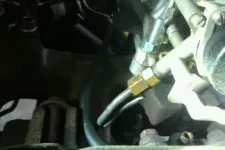78 CJ7 Carb question
Air Force
Jeeper
What the heck are these two tubes on the passenger side of my carb? It is a 78 CJ7, 304 with a 2100-2 carb. I am in the middle of a frame off restoration. I was taking the engine apart and these two tubes were broken off at the manifold. I cannot find anything in the TSM, or on line about them. They are a hard line and run from the right side of the manifold to the right side of the carb. This is the one part of these jeeps I have no clue about (carb) I tend to stay away from them, but had no choice in the matter if I wanted to do this rebuild correct
http://www.jeep-cj.com/gallery/files/5/6/4/9/carb.jpg

http://www.jeep-cj.com/gallery/files/5/6/4/9/carb.jpg

Last edited by a moderator:


